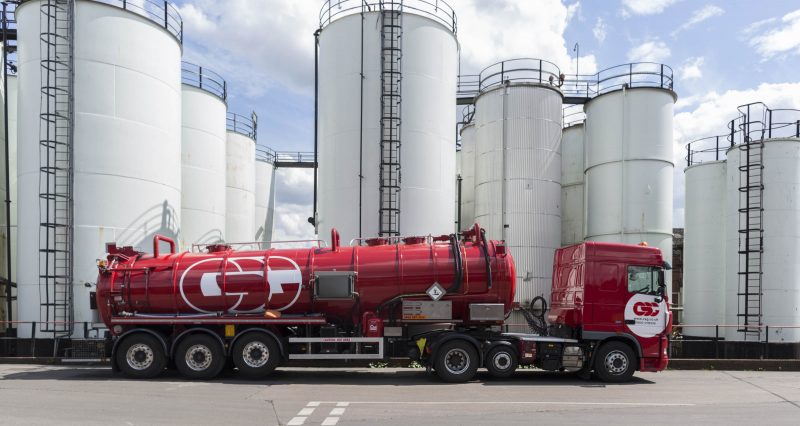Making Sustainability Count
22 March 2018 by Daryl Tunningley

“Knowledge is power”. “Data is value”. “If you can’t monitor it, don’t do it”. We’re probably all familiar with these rather trite sayings because aspiring managers everywhere love to sprinkle them into their meetings and briefings. It’s tempting to treat them as a fashionable irrelevance, like more notorious examples such as “blue-sky thinking”. However, just because a belief in number-crunching is so closely associated with management-speak, it doesn’t mean it’s meaningless. Far from it; unlike the more cringe-worthy sayings like “sweating the asset”, there’s lots to be said for, er, sweating the data asset – so to speak…
CSG is one of those businesses for whom more data is better than less. Financial performance, tendering capability, regulatory compliance and many other aspects of the business are all governed by clear, accurate, day-to-day data-gathering. Crucially, in order to operate with distinction in the waste sector, we also need to be able to practice what we often preach – a commitment to environmental excellence – and that means we need to be able to point to some impressively green statistics.
In 2015, we demonstrated compliance with the mandatory Energy Savings Opportunity Scheme (ESOS) following a 15-month analysis of our total energy use across the business. The following year, we joined the Logistics Carbon Reduction Scheme (LCRS). Both initiatives require us to manage and reduce our carbon impact and demonstrate more efficient ways of doing business. In order to start to do that, first, you need to know what your starting point is, which means – you’ve guessed it – closely monitoring our energy usage.
The font of much of our statistical knowledge is Antony Gerken, our Permitting and Compliance Manager. It’s Antony who ensures that our many and varied accreditations are attained – and then retained – amid ever-tightening regulations. When the time comes to renew an ISO certificate or add another to our long list of accreditations, Antony’s our go-to guy to get the job done!
In order to achieve better carbon efficiency, several years ago, we took the decision to refresh a large proportion of our fleet of lorries, a process that came to the end of its cycle last year. Now, with enough time having passed to generate enough usage statistics, Antony is able to quantify the effectiveness of our fleet investments of the last few years. A combination of newer, more efficient trucks, the ability to monitor inefficient driving and computerised job schedules, digitally communicated to drivers, have all promised more efficient mileage and less time travelled between jobs. Antony describes his most impressive finding:
“We usually average between 8-10 miles per gallon for our tanker fleet. In 2017 we hit an average mpg of 10.389, which is a significant improvement on 2016. If you assume we did the same mileage in 2016 and 2017, the increased efficiency works out at around 200,000 fewer litres used in 2017.”

As we all know, the standard unit of measurement for lots of liquid is the Olympic-sized swimming pool (2.5 million litres). 200,000 litres of fuel isn’t nearly enough to fill it, it’s about one-twelfth of the volume. You could try to visualise a depth of 16cm of diesel sloshing around in there but it may be more helpful to think of it this way: an average family car being driven in a way that requires it to be filled once a week uses around 2,800 litres a year. Our diesel saving alone in 2017 would have been enough to fuel over 70 such cars for a full year – the equivalent of a large housing estate or even a whole village’s annual use!
Another way to look at it would be to say that it’s the amount of fuel our more efficient fleet now requires to travel an extra 500,000 miles – the same as fuelling 20 CSG trucks to travel around the world!
In addition to the reduction of fuel being consumed, less diesel in also means fewer emissions being released. Antony calculates this figure to be 528 tonnes of CO2. Again, this isn’t an easy thing to visualise but there are ways to understand what that might be equivalent to, thanks to websites like yousustain.com. YouSustain suggest that the CO2 reductions we made through our fleet in 2017 are equivalent to the emissions of 104 cars for a whole year. Or 40 houses. Or, if you’re feeling adventurous, one whole 747 flying from London to New York – and back.
Of course, while environmental benefits are their own virtue, let’s not forget the fact that using less fuel costs CSG less money. The more financially efficient our operation is, the more competitive our prices can be. As is most often the case, if the environment gains as a result of someone saving money, it tends to happen more quickly and, as savings are there to be passed on, everyone can gain from the initiative.
As you can imagine, the quest for greater sustainability and better efficiency won’t stop here – to many people, the challenges of environmental responsibility have barely begun – but we believe it’s an important step and one that demonstrates our credibility to adopt the most fundamental principles of the Waste Hierarchy. In operating more efficiently, we’re preventing the consumption (and emission) of a significant amount fossil fuel. That’s got to be something worth “running up the flagpole”!
